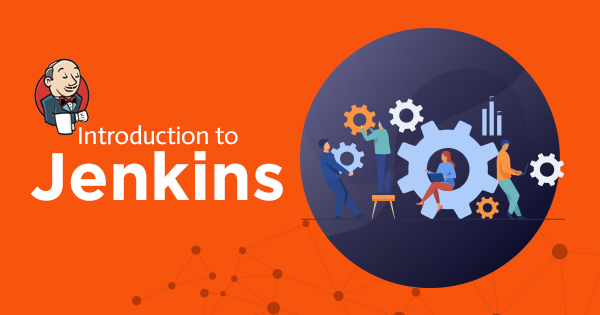An Introduction to Jenkins: The Backbone of CI/CD in DevOps
 Nitin Dhiman
Nitin Dhiman
What is Jenkins?
In the ever-evolving world of software development, automation has become essential for delivering high-quality products at speed. Jenkins is one of the most popular tools that enables this by providing a powerful, flexible platform for continuous integration (CI) and continuous delivery (CD).
Jenkins is an open-source automation server written in Java. It helps automate parts of the software development process, such as building, testing, and deploying code, making it easier for teams to continuously integrate and deliver software. Originally developed as part of the Hudson project, Jenkins was forked in 2011 and has since grown to become a staple in DevOps practices.
Why Jenkins?
1. Continuous Integration (CI): Jenkins automates the process of integrating code changes from multiple contributors into a shared repository. Every time a developer commits code, Jenkins can automatically pull the latest changes, build the project, run tests, and alert the team if something breaks. This ensures that code is always in a deployable state, catching issues early in the development process.
2. Continuous Delivery (CD): Beyond CI, Jenkins also supports continuous delivery, where it automates the deployment process. After code is tested and deemed stable, Jenkins can automatically deploy it to a staging environment or even directly to production, reducing the time and effort required to release new features or fixes.
3. Plugin Ecosystem: One of Jenkins' greatest strengths is its extensive plugin ecosystem. With over 1,800 plugins available, Jenkins can integrate with virtually any tool or technology in your development pipeline, from version control systems like Git, to containerization tools like Docker, to cloud platforms like AWS.
4. Scalability and Flexibility: Jenkins is highly scalable and can be distributed across multiple machines to manage large workloads. It supports both freestyle projects, which are simple and customizable, and pipeline projects, which define more complex, multi-step workflows as code.
5. Open Source and Community Support: As an open-source tool, Jenkins benefits from a large and active community. This means frequent updates, a wealth of plugins, and extensive documentation and support from other users and contributors.
How Does Jenkins Work?
At its core, Jenkins works by monitoring changes in a version control system like Git. When changes are detected, Jenkins triggers a series of automated tasks, called jobs. These jobs can include compiling code, running tests, analyzing code quality, and deploying the application. Jenkins can execute jobs sequentially or in parallel, depending on how the pipeline is configured.
Key Components of Jenkins:
Jobs: A job in Jenkins is a task or a set of tasks that Jenkins runs. Jobs can be simple, like compiling code, or complex, like a complete CI/CD pipeline.
Pipelines: A pipeline in Jenkins is a series of jobs that are linked together. Pipelines can be defined as code using a domain-specific language (DSL) called Jenkinsfile, allowing versioning and easier sharing of the CI/CD workflows.
Nodes: Nodes are machines on which Jenkins runs jobs. The Jenkins master node schedules jobs, while agent nodes (also known as slaves) execute them.
Plugins: Jenkins plugins extend its functionality. For example, the Git plugin allows Jenkins to pull code from a Git repository, while the Docker plugin lets Jenkins interact with Docker containers.
Setting Up Jenkins
Setting up Jenkins is straightforward. It can be installed on any machine that supports Java, including Linux, Windows, and macOS. Once installed, you can access Jenkins through a web interface, where you can configure jobs, set up pipelines, and install plugins.
Basic Steps to Get Started:
Install Jenkins: Download and install Jenkins from the official website or use a package manager.
Access Jenkins: Once the Jenkins installed, It can be accessed via a web browser at
http://localhost:8080.Configure Plugins: Install necessary plugins for your development environment. Jenkins offers a suggested set of plugins during the setup, which you can customize.
Create a Job or Pipeline: Define your first job or pipeline to automate tasks like building, testing, and deploying your code.
As we've explored, Jenkins is not just a tool but a cornerstone of modern DevOps practices, enabling teams to automate their CI/CD pipelines with ease. By mastering Jenkins, you can significantly enhance your development workflow, reduce manual errors, and deliver high-quality software faster. Whether you're just getting started or looking to deepen your knowledge, embracing Jenkins will undoubtedly set you on the path to becoming a more efficient and effective DevOps engineer. Keep experimenting, keep learning, and watch as Jenkins transforms the way you build, test, and deploy your applications. Happy automating! 🚀
Subscribe to my newsletter
Read articles from Nitin Dhiman directly inside your inbox. Subscribe to the newsletter, and don't miss out.
Written by
